BY SAM CARCHIDI





BY SAM CARCHIDI












BY KEN DUNEK
IHAVE KNOWN RON AND LIZ JAWORSKI FOR 45 YEARS.
First, he was my QB with the 1980 Eagles. Unfortunately for me, that part of our relationship didn’t last very long.
As I drifted to other teams and other leagues, we always stayed in touch. Primarily because he was always entrepreneurial.
He had a hot tub business while he was playing, and my thoughts were how does he have the time to master Coach Vermeil’s playbook AND run a business on the side?
After we both retired, we would bump into each other at local chamber events. And of course, he was always kind enough to invite me to his celebrity golf outing.
This is really a star-studded affair with big-name players from other cities like Jim Kelly, Joe Flacco, Rich Gannon, Merril Hoge, Andre Reed and others.
And, of course, current and former Eagles like Cooper DeJean, Reed Blankenship, Jason Kelce, Keith Byars, Brandon Graham, Jon Runyon, Mike Quick, Brian Westbrook, Seth Joyner, and Harold Carmichael are usually there to support.
Ron was an amazing player. Tough as nails. The hit he took from Mike Hartenstein of the Bears in 1980 would have ended a lot of careers. He took a couple of plays off, and as I recall went back in the game.
Ron and Liz have raised over $8.5 million in 41 years for their charity from the golf tournament, as well as raising money for bikes and other items for underprivileged youths in our area.
They remain firmly committed to Philadelphia and South Jersey. And by the look at the turnout and monies raised, it is a very mutual commitment.
I only have one complaint… my team finished 18-under and tied for 2nd.
I’m throwing the penalty flag on that one.


JerseyMan
Ken Dunek PUBLISHER
ASSOCIATE PUBLISHER
Ashley Dunek
EDITOR
George Brinkerhoff
ART DIRECTOR
Steve Iannarelli
CONTRIBUTING WRITERS
George Anastasia, Jan L. Apple, Michael Bradley, George Brinkerhoff, Sam Carchidi, Alexandra Dunek, Mark Eckel, Dei Lynam, Anthony Mongeluzo, Kevin Reilly, Mike Shute, Kurt Smith
Event Coordinator & Administrative Assistant
Alexandra Dunek
Website & Digital Coordinator
Jamie Dunek
Editorial gbrinkerhoff@jerseymanmagazine.com
Advertising 856-912-4007
Printing Alcom Printing, Harleysville, Pa.
Controller
Rose M. Balcavage
Sales Associates
Ashley Dunek, Jamie Dunek, Terri Dunek, JP Lutz
JerseyMan/PhillyMan Advisory Board
Peter Cordua (Chairman) Cordua Consulting, LLC
Don Eichman Alcom Printing
Bill Emerson Emerson Group
Jerry Flanagan J Dog Brands
Damien Ghee TD Bank
Bob Hoey Janney Montgomery Scott
Kristi Howell ........ Burlington Co. Chamber of Commerce
Ed Hutchinson Hutchinson
Robert Kennedy ................... Waterworks Metrology
Anthony Mongeluzo PCS
Charlie Muracco CLM Advisors
Ryan Regina Big Sky Enterprises
Scott Tanker Tanker Business Solutions
Joe Tredinnick Fulton Bank
Jim Wujcik The Joseph Fund
“Ah,
summer, what power you have to make us suffer and like it.”
– Russell Baker





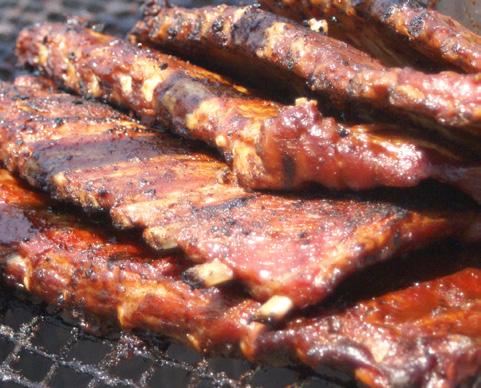

BY GEORGE BRINKERHOFF
“If a June night could talk, it would probably boast it invented romance.”
– Bern Williams

SEALS were originally materials and impressions that literally “sealed” a document, (unique impressions usually in wax which bound a document), which showed that a document remained unread and officially recognized the legality of documents. Rings with seals engraved were long used to make these wax impressions and have been employed from the dawn of history, but the design and artistry of seals has led to their usage as symbolic emblems, conveying their various “official” elements rich with meaning.
You’re probably familiar with the Great Seal of the United States, as its rendering appears on the reverse side of the one-dollar bill. The front of the seal is the familiar national coat of arms featuring an outstretched eagle with stars over its head and bearing a shield with colors like the American flag, clutching an olive branch in its right talon and 13 arrows in its left, its head facing the olive branch, a pose steeped in symbolism. There’s a scroll in

its beak reading “E Pluribus Unum” (or “Out of Many, One”). The reverse of the seal features a pyramid with the “Eye of Providence” on top. And you may also be familiar with New Jersey’s own official Great Seal, since it’s featured on official documents as well as the official flag of the Garden State. (The Great Seal of the State of New Jersey was designed and presented in 1777 by Pierre Eugène Du Simitière, well prior to the first usage of the Great Seal of the United States, which is said to have taken “six years, three committees and the contributions of fourteen people” to achieve in 1782.
But maybe you’re not so familiar with some other regional “official” seals. Did you know that each county in New Jersey has its own official seal? Here are a few in our region:
Named for Atlantic Ocean to which it is adjacent, the county seal contains the year the county was formed, 1837, above a drawing of a 3-masted sailing vessel.

The official seal of Burlington County includes a horse-drawn wagon proceeding over a causeway with seagulls in the background. It is claimed to be identical to the original version when Burlington first became a county on May 17, 1694, except that it no longer includes the words ‘Board of Chosen Freeholders’ on its border. (Under Governor Phil Murphy’s administration, the term ‘freeholder’ was deemed confusing, even racist, and legislation was passed to eliminate the term statewide from all official usage. The Burlington County Board of Freeholders voted 13 to 0 on August 21, 2020, to officially change their name, and are now known as the Burlington County Board of Commissioners.
Camden County’s seal recognizes the agricultural history of the area and features a plough on a sunny landscape and the date of the county’s incorporation, 1844, above a cornucopia showing a variety of farm produce in the semi-circle below.

This county seal depicts a boat believed to represent Henry Hudson’s Half Moon who discovered Cape May for the Dutch in August of 1609. Other symbols include a compass arrow indicating the position of the county, an anchor with fish and whales representing the maritime economy, a beehive possibly representing industry, a stack of books symbolizing education and a cornucopia for agriculture. The symbol at the bottom is said to be a mystery, as the official history indicates that no one knows what it might be. On May 1, 1927, this design became the official seal for Cape May County, NJ.

This design was the result of the Gloucester County Historical Society’s sponsorship of a contest of the county’s schoolchildren, frequent consultation with heraldry experts and communication with officials of Gloucestershire, England from which the county took its name, all in 1960.
The seal depicts the golden domed New Jersey State House surrounded by residential homes and business towers. In the fore-

ground of the seal is the Mercer Oak, a huge oak tree that was estimated to be 300 years old when taken down in March 2000, which stood on the Princeton Battleground State Park in Princeton, NJ. Named after Brigadier General Hugh Mercer of the Continental Army, who, after being bayonetted and mortally wounded by an English soldier during the battle on January 3, 1777, according to legend, remained resting on the trunk of the tree, unwilling to leave his troops while they held their ground.


OKAY, CONSIDER THIS a public service announcement. Really, it’s just a reminder, though. Maybe you’ve forgotten. Look, here’s the deal: RIGHT THIS VERY MINUTE, ON ANOTHER PLANET IN OUR VERY OWN SOLAR SYSTEM, TWO REMOTE-CONTROLLED ROVERS ARE CONTINUING THEIR MISSIONS, DRIVING ALL OVER THE SURFACE OF AN ALIEN WORLD SEARCHING FOR ALIEN LIFE ON A DAILY BASIS. Perhaps most astonishingly of all, they are BEAMING BACK PHOTOS FROM THE SURFACE OF OUR CLOSEST INTERPLANETARY NEIGHBOR, MARS, THE RED PLANET! (Sorry for yelling, but I thought that might help.)
Talk about astonishing feats of human engineering!!
To date, there have been six rovers which have landed and operated successfully on the Martian surface: five from NASA’s Jet Propulsion Lab and one from China. As of July 2025, there are still two active rovers looking for evidence of life on Mars: Curiosity which was launched November 26, 2011, and Perseverance, launched July 30, 2020 (and carrying its companion helicopter, Ingenuity). The other four, including the Chinese developed vehicle, are no longer operational.
Both Curiosity and Perseverance are car sized rovers with similar features and goals, including investigating Martian climate and geology, searching for evidence of microbial life and water, and habitability studies in preparation for possible human exploration. As of this writing, Curiosity has been operating for over 4,700 earth days, or over 12 years, and its counterpart, Perseverance, for over 1,500 earth days, or over 4 years.
Maybe, though, we’ve all just really forgotten how to be amazed anymore. Well, take a look at these photos taken ON THE PLANET MARS to help remind us again. (Yeah, still yelling.)




THE NEWEST EXTENSION of the Schuylkill River Trail, called from “Christian to Crescent,” is a half mile connection located on the east side of the Schuylkill River which opens center city Philadelphia to the South Philly neighborhoods and vice-versa.
Officially opened on May 17, 2025, the $48 million dollar project is an entirely off-road route linking the downtown area near Christian Street with the Gray’s Ferry Crescent at 34th Street, which had been previously cut-off by industry and infrastructure.
Perhaps the most spectacular feature of the trail is the 650-foot-long cable-stay bridge (below) with two bright white towers that rise 168 feet above the water line, and will be lit up at night, becoming a new part of the center city skyline. The bridge itself provides views of both the city and the Schuylkill River. The section also includes benches, trash cans, flowering perennials and trees, and a tunnel to the Grays Ferry Crescent as well as trail lighting for nighttime use and safety. More sections are in the works, with the ultimate goal to connect all 120 miles of Pennsylvania’s Schuylkill River Trail between Reading and Philadelphia.









Ladies of Legacy with Women in Business “Derby Day” at Prime IV





Legacy Club at Play2 at Chickie’s & Pete’s – Philadelphia, PA Photos: John Wilchek Photography




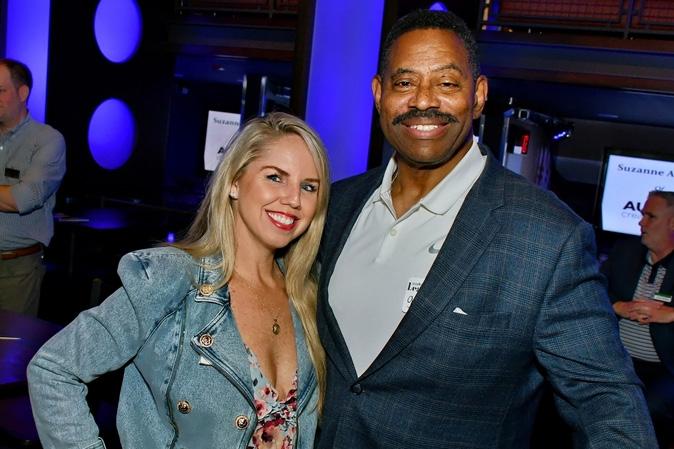
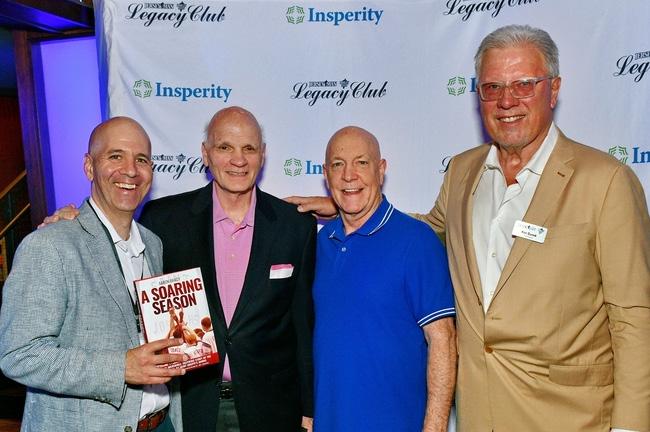
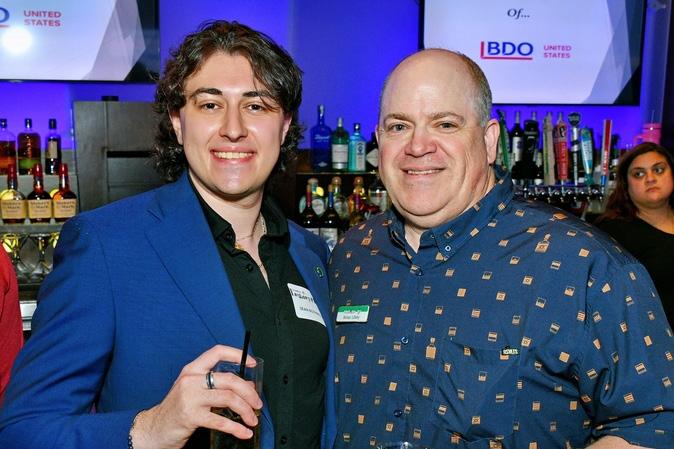





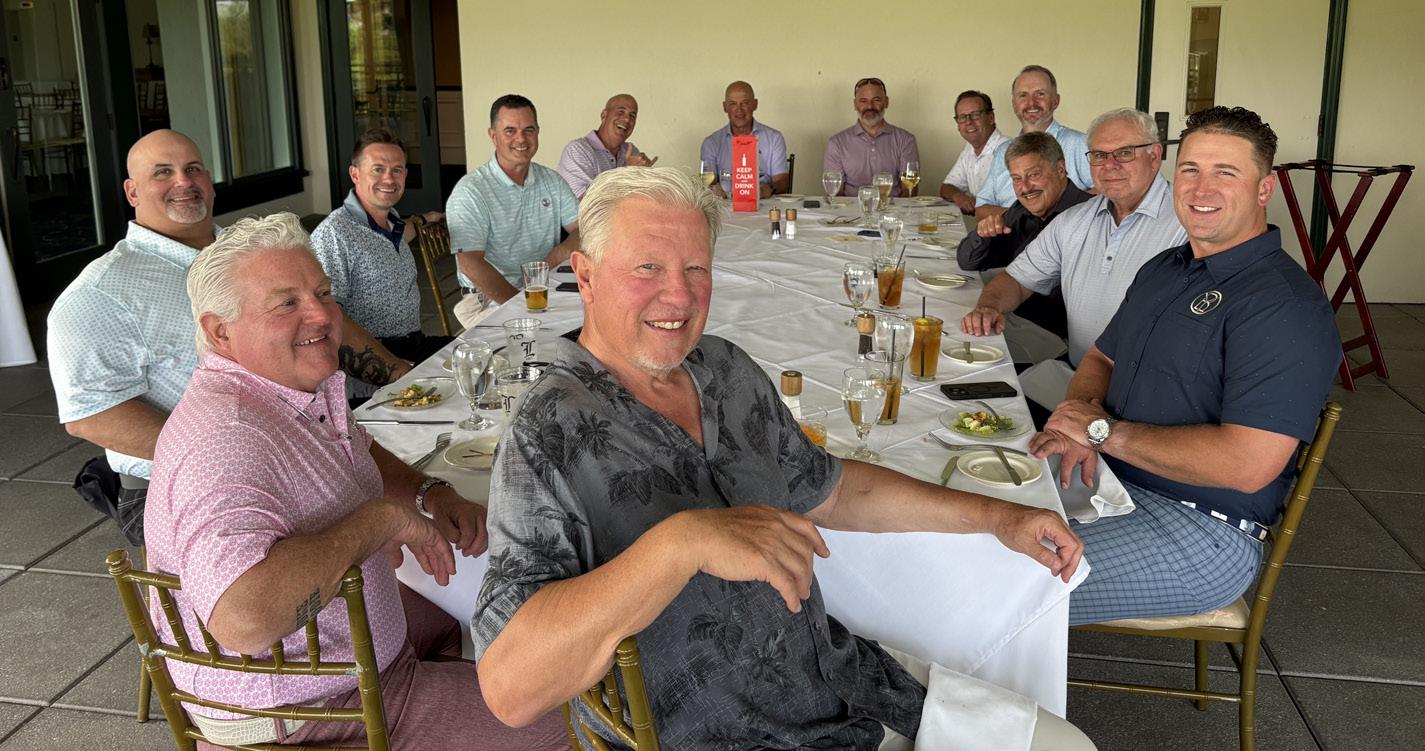



BY GEORGE ANASTASIA
We’ve been here before
SOME THINGS NEVER CHANGE.
The New Jersey Attorney General’s Office has detailed yet another racketeering-gambling case against the Jersey branch of the Lucchese crime family. Thirty-nine mob members and associates have been charged in what authorities allege was a $3 million gambling ring built around poker rooms, internet sports betting, bookmaking and loan sharking. We’ve been here before.
“Organized crime in 2025 may look different than it did 50 years ago, especially thanks to the online component,” said Attorney General Matthew J. Platkin at a news conference in April where he announced the arrests. But the bottom line remains the same, “criminals motivated by greed and power who think they are above the law,” he said.
Those charged in the case include George Zappola, described as a member of the “ruling panel” of the Lucchese organization, Joseph “Big Joe” Perna said to be a capo in charge of the New Jersey crew, and Perna’s cousin, John, listed as a soldier and major gambling operative for the organization in the Garden State.
The Pernas, according to underworld and law enforcement sources, are third-generation mobsters. John was one of the defendants in the last big case, an investigation dubbed Operation Heat that unfolded in 2007. His brother, “Little Joe” and his father were also charged along with two high-ranking New York leaders of the organization. All ended up doing jail time.
“This was not a backyard betting pool,” said Theresa L. Hilton, director of the Division of Criminal Justice, at the same April news conference. “This was a highly structured, highly profitable criminal enterprise run by people who believed they were above the law.”
A former North Jersey mob figure offered an underworld perspective on the latest case and the players involved.
“Gambling for the Pernas is like politics for
the Kennedys,” he said. “It’s in their blood.”
The case is months away from trial and as often happens, many of the lesser players are expected to plead out before a jury begins hearing testimony. Bail was originally denied for Zappola and the Pernas, but their lawyers were appealing that issue as this was being written.
“It’s a gambling case, nothing more,” said one source close to the Perna camp who argued that denying bail was part of the hype surrounding an investigation that law enforcement is trying to make more important than it
committee of the Lucchese family, according to authorities.
An arrest complaint details various meetings in which Zappola is alleged to have received cash from members of the gambling ring. In the mob, money always flows up. But to date, most of the information about alleged criminal activity focuses on the lesser players.
One added twist which has drawn additional attention is the fact that one of the defendants is Prospect Park Borough Council Member Anand Shah. Shah is accused of managing poker games and running an online
“This was not a backyard betting pool. This was a highly structured, highly profitable criminal enterprise run by people who believed they were above the law.”
really is. SWAT teams descending on Zappola’s condo on the day of the arrests was another example, he said.
Zappola, nicknamed “Georgie Neck,” appears to be the primary target. The 65-year-old mobster came up in the organization under the notorious Anthony Casso and in the 1990s was convicted in a murder-racketeering case that carried a 22-year prison sentence.
, he was accused of bribing a prison guard to smuggle a sample of his sperm to a fertility clinic in order to impregnate his girlfriend. The girlfriend later changed her mind about the planned pregnancy, but the case was dropped when she refused to testify against him. Released from jail about 10 years ago, he has steadily moved up the ranks of the organization and is now part of the ruling
sports betting book.
The mob and politics – quintessential New Jersey.
The mayor of Prospect Park was quick to point out that the allegations against Shah were unrelated to his duties as a councilman., insisting that “transparency” and “ethics” were the hallmarks of local government.
Somewhere Tony Soprano is smiling. In fact, many believe the history and antics of the New Jersey branch of the Lucchese crime family were the inspiration for that long-running HBO series. If so, the latest case adds several more story arcs.
There is, for example, a separate charge focusing on two of the gambling operatives who are accused of routinely shop-lifting from a local Home Depot, taking shopping carts full of items used to refurbish houses they had purchased and planned to resell.
And there are details about meetings in North Jersey coffee shops and restaurants, with envelopes (stuffed with cash?) supposedly changing hands. Conversations about mob business and underworld gossip were also overheard by investigators who were close enough to listen.
On at least two occasions there were references to the Philadelphia crime family which has long had an interesting relationship with the Lucchese crew from North Jersey.
More details are expected to surface as the case moves toward trial.
But what is already clear, is that this was a 21st-century investigation. While the gambling ring might have been taking advantage of modern, high-tech online platforms to operate its sportsbook, law enforcement smoothly tapped into that same technology to build its case. A 29-page criminal complaint detailing the charges against each defendant includes repeated reference to electronic surveillance, text messages, banking records and footage from security surveillance cameras set up by the gambling operatives but reviewed by authorities who had obtained a “Communications Data Warrant” to get access.
Authorities said a review of Shah’s iCloud
account, for example, included a message in which he referred to his “partners Joey and John Perna.” Tracking cash movements on Cash App and Zelle, authorities said Shah moved $365,725 during one four-year period to and from members of the alleged betting ring.
In all, authorities say they have tracked thousands of text messages showing members of the betting ring “explicitly discussing gambling activities on the sportsbook and the collection of gambling debts.”
Several of the operatives used legitimate businesses as a front or cover for their gambling activities, according to the complaint, and often transferred cash through legitimate accounts in what authorities allege was money laundering.
MARIO CAPALBO, the owner of Garden Pinball in Paterson, was described as a “poker manager” at the Café San Gennaro in Woodland Park and also the supplier of illegal gambling machines for the poker rooms.
“Players may have to wait for a seat to become available at the poker tables,” according to the criminal complaint. “Thus, the gambling machines are available for players who are waiting or choose to use the machines instead
of a live game.”
Authorities allege that Capalbo’s business generated $515.362 in cash deposits during the four-year period of the investigation and that he used a “shell company” through which he moved $1,259,968.
“I believe the business accounts were used solely to make the cash payments look legitimate,” wrote New Jersey State Police Detective Sergeant Michael Gallant, who filed the criminal complaint.
Gallant also pointed to the high-tech use of websites as a modern twist on a very old game.
“The websites allow traditional organized crime members and associates to use the internet and current technology to engage in the same criminal acts that traditional organized crime has engaged in since the 19th century,” Gallant wrote in the complaint.
But while high-tech might have been used to streamline the business, some things remained very much the same.
“If a bettor…failed to pay his gambling losses,” Gallant wrote, “agents and subagents reported the delinquent debt to high-ranking members of the enterprise who used threats of violence to collect.”
Some things never change. n


IN EARLY MAY, the Philadelphia golf community was treated to seeing some of the world’s best male golfers when the Philadelphia Cricket Club played host to the Truist Championship. Truist is one of eight signature events on the PGA tour this season. The tournament showcased the top 72 players on the tour, including reigning Masters champion and last year’s Truist winner, Rory McIlroy.
With a prize purse of $20 million and 700 FedEx Cup points on the line for the winner, this limited-field event provided an ideal opportunity for the top players to compete at the highest level. Unlike traditional tournaments, there was no cut at the Truist Championship. That allowed fans to see many of their favorite golfers play the esteemed A.W. Tillinghast-designed Wissahickon course for four consecutive days.
The tri-state area does not regularly host such an event. Therefore, the enthusiasm for all the festivities surrounding the tournament was overflowing. The Truist Championship has an annual home at Quail Hollow Golf Club in North Carolina. But this year, that club was hosting the PGA Championship. The PGA Tour made a phone call to Philly Cricket, asking
them to handle the 2025 tournament before it returns to its regular home in 2026.
The week kicked off with a pro-am outing. The golfer drawing the deepest traveling gallery was former Philadelphia Eagle Jason Kelce. Leading up to the event, Kelce turned to social media, asking for golf tips from anyone and everyone, hoping to improve his game, knowing the course conditions would be the toughest he had ever faced.
“The course is in great shape,” Kelce said. “It is gorgeous. All the guys we played with were great. Shane Lowry and I have the same ethos.
“This was right up there with the hardest courses I have ever played. I don’t usually play courses in tournament conditions. If you were in the rough today, it was ridiculous. I have
The tri-state area does not regularly host such an event. Therefore, the enthusiasm for all the festivities surrounding the tournament was overflowing.


played a couple of courses where they let the rough grow out, maybe on purpose, but this rough was tough. And then the greens were speedy, especially as the day went on. The grounds crew gave me a good education on the bent grass, which is different than other grass.” Kelce was always a fan favorite when he
courtesy GAP
played for the beloved Birds, and despite having a golf game that did not equal his football talent, fans wanted to be in earshot of him his entire round.
“I think Philly is an unbelievable golf hub,” Kelce said. “There’s a lot of fans of the game. There are many incredible courses. There’s a ton of history. The players seem fired up about it (Truist Championship), and the fans seem fired up about the tournament as well. We have Aronimink next year and the U.S. Open a few years after that.”
MAJOR CHAMPIONSHIP GOLF returns to the Philadelphia region for the 108th playing of the PGA Championship in May 2026 at Aronimink Golf Club. The U.S. Open returns to historic Merion, where the championship will commemorate the 100th anniversary of Bob Jones completing the Grand Slam with his victory in the 1930 U.S. Amateur. Kelce is correct; there is a plethora of golf history in the region.
Fans who walked the Wissahickon course during the pro-am were respectful of the other foursomes on neighboring holes, but that did not stop all people from expressing their fandom vocally.
“There were more Go Birds chants than EA-G-L-E-S,” Jason Kelce explained. “Go Birds is
definitely what I hear most now. It is more of a call-and-response. [For] E-A-G-L-E-S, someone has to get it going, and then you join halfway through. Go Birds is easier.”
When Kelce’s 18-hole round was over, he spent another 45 minutes signing autographs, taking pictures, and having conversations. One aspiring 13-year-old broadcaster asked an astute question about Kelce’s popular podcast, New Heights. He wanted to know if Kelce gets nervous doing the shows with his brother Travis.
“I was nervous doing the podcast when I was still playing because when you don’t perform well, and you go in front of a mic, fans don’t
want to hear you make up a bunch of excuses,” Kelce shared. “That can be a little daunting and a bit of a distraction. It is an incredible landscape now, thanks to social media and YouTube. The ability for players to connect directly with fans has never been greater. It also allows players to voice their opinions on things, which is great.”
By the end of last year’s NFL season, New Heights had more than 2.5 million subscribers. With that knowledge, Kelce plans to deliver a YouTube series documenting the progress of his golf game, using online videos as the sole instructional source. Stay tuned! n


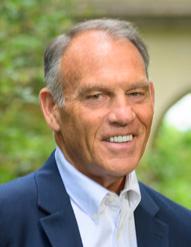
Kevin Reilly is an author, motivational speaker, and former Philadelphia Eagle. To contact Kevin Reilly, visit https://www.kevinreilly52.com
YOU MAY RECALL that several months ago, I wrote about the passing of golf legend Chi Chi Rodriguez. I got to know Chi Chi through the Leukemia Classic golf tournament, which I chaired for several years, and I also came into contact with him because we had the same doctor at Sloan Kettering Hospital in New York. So why is a former Eagle linebacker writing about another golf legend, you might wonder?

Several months ago, Jay Sigel called me to say that he would like me to consider being the “Honoree” at his annual Jay Sigel Invitational golf tournament. The event, held each year at the Aronimink Golf Club, has raised over $5.5 million for the Abramson Cancer Center at the University of Pennsylvania Health System. He also informed me that he was several months into his own battle with pancreatic cancer. I did not know Jay well. We had a few brief encounters over the years and happened to share the same biographer, John Riley. Jay mentioned to me that he had become aware of my story through John and others on his committee. Additionally, Jay was a huge Philadelphia sports fan, especially of the Eagles.
F COURSE I SAID YES, and in the months since, I have been delving deep into Jay’s fabulous career and learning more about the Sigel Invitational and his work with Abramson. My exploration of Sigel’s past has been a unique process. When he writes, John Riley likes to have a few individu-
Sigel’s career marked the end of an era in golf—an era when the very best amateur golfers played golf purely for the love of it.
als read his chapters after he completes them and provide feedback. So, I once again have a front-row seat to the evolution of an autobiography, just as I did with my book, Tackling Life. e approach to the two books has been slightly different. John and I were very close friends as I battled my desmoid tumor and underwent a major amputation of my arm and shoulder. He was also an eyewitness to my recovery. We spent hours together reviewing my

past, and I would draft chapters in longhand that he would type and improve upon.
In Sigel’s case, the golfer created an outline of significant events in his life, and they spent hours on Zoom calls discussing the details. John gathered information from other sources, drafted the chapters, and sent them to Jay for review. Tragically, Jay lost his battle with cancer before they finished the book, but John has the recordings and transcripts that will allow him to complete the story. He has also been interviewing people close to Jay and prominent figures in the golf world.
JAY SIGEL IS OFTEN REFERRED TO as the greatest amateur golfer since Bobby Jones, but many are unaware of the challenges he faced on his journey to the pinnacle of amateur golf. I was surprised to discover the modest circumstances of the Sigel family. Jay grew up in a small home in Narberth, but through caddying and a family membership at Bala Golf Club, he cultivated a passion for the game. A big kid and an allaround athlete, an incident during Babe Ruth league baseball and advice from his father
prompted him to concentrate solely on golf. By the time he was 17, he had become the top junior player in the country.
Attending Wake Forest University as the first recipient of the Arnold Palmer scholarship, he earned All-American honors in his first full season before disaster struck. He put his left hand through a glass door, suffering a devastating injury that severed the ulnar nerve along with causing other damage. After a three-hour operation and nine days in the hospital, it seemed he would never play golf again. However, Jay persevered, and a year later, after returning to school, he won a major intercollegiate tournament, although he had to ice his hand every night to reduce swelling and pain.
It turned out that Jay’s return to form was short-lived. He continued to suffer from pain and weakness for many years but made adjustments to his clubs and swing to establish himself as one of the top amateurs in the Philadelphia area. He also continued learning how to manage himself both on and off the golf course. He worked out to strengthen himself, adjusted his clubs, and became a student of the game. Twelve years after the accident, he won his first national tournament. At the same time, he began a successful business career and, along with his wife Betty, started raising three daughters.
In addition to exploring how Jay became the golf legend we know, the book shares intriguing stories from national amateur championships, the Masters, and much more. Jay played with and against the biggest names in golf and consistently held his own. I had to laugh at some of the personal anecdotes, particularly about Jay’s famous thriftiness, as he had to manage his finances carefully due to travel expenses and building his company. During my time at Xerox, I attempted to sell him office equipment, and I can honestly say it wasn’t easy!
One fascinating aspect of the book is learning how Sigel’s career marked the end of an era in golf—an era when the very best amateur golfers rejected the riches of the professional game and played golf purely for the love of it. Even Jay succumbed to the allure of the professional game at the age of 50, joining what is now known as the PGA Tour Champions. In just his fourth tournament, he came from 10 strokes behind on the final day to capture his first win. Still, the title, The Last Amateur, is appropriate.
One of John’s interviews for the book was with Fred Ridley, chairman of Augusta National Golf Club, who said about Jay, “We will never see his like again.” n

BY ALEXANDRA DUNEK
THE SUPERFRUIT ACAI is a small, purple berry found in Central and South America. It became popular in the US, typically served frozen and blended, known as an Acai Bowl. It comes with different toppings and it’s a refreshing way to cool off on a hot day. However, most of the options can go up to a thousand calories per bowl so let me show you how to order your next treat that is more calorie-friendly from Playa Bowls.
Base: Acai
Toppings: Blueberries, Vegan Granola (use ½ portion), Cacao Nibs
Total: 445 calories
The best way to construct your own bowl would be to pick three toppings. Even though the choices are nutritious, they can add up quickly to a high-calorie count. Aside from kiwi and blueberries, you could also use strawberries, pineapple or mango. There is also an option to add protein powder to make it more balanced. Other toppings you could use are chia seeds, hemp seeds, cinnamon, coconut flakes, figs or goji berries. n
Base: ½ Acai and ½ Green
Toppings: Kiwi, Vegan Granola (use ½ portion), Bee Pollen
Total: 385 calories




BY MICHAEL BRADLEY

Ask Jeff Nash how long he has been a Camden County commissioner, and he laughs.
“One hundred and thirty-nine years.”
Actually, it has been 33 years, so Nash is, um, seasoned. He has been around long enough to see the county’s collection of music series grow from humble starts to extremely popular events.
And he won’t forget the time he met Peter Frampton. The British rocker played Camden’s July 4 celebration in 2000, and Nash was excited to connect with the man whose 1976 live album Frampton Comes Alive has sold more than eight million copies. But when the time came, Nash was a little confused.
“I looked for the guy on the album cover with the long hair,” he says. “He was balder than I was.”

Nash may have been disappointed that time had diminished one of his rock-n-roll heroes –or at least his hair – but he is certainly not upset about the concerts, which draw tens of thousands to venues across the county every year.
“People can come out on a beautiful night with a lawn chair and enjoy music with some great ambiance,” Nash says. “There are food
trucks and vendors.
“Property values in Camden County have exploded, and part of that is making sure the park system is immaculate. The concerts help the quality of life, and we have perfect venues. Residents can leave their houses, walk to the parks and enjoy free entertainment. From all reports I have received from the various corners of the
county, people are happy with the concerts.”
The county sponsors a variety of concert series, and just about every resident can find something they would like to hear.
“ Variety is very important,” Nash says. “There is something for everyone.”
AT WIGGINS PARK, which has tremendous views of the Philadelphia skyline, there is the annual Sunset Jazz Series, which has been bringing local and national acts to residents since 1992. Singersongwriters rule in Haddon Lake Park at the Sundown Music Series, which features a partnership with iconic alternative radio station WXPN.
The Twilight Concert Series at Cooper River Park has hosted some big names over the years at Jack Curtis Stadium, while there are also performances at New Brooklyn Park in Winslow Township, in Lindenwold Park in Lindenwold, Lions Park in Waterford, Connolly Park in Voorhees and Leanna Harris Park in Chesilhurst.
Because the concerts are free, it’s easy for families to find entertainment that suits them. Nash talks about last year’s concert at the Cooper River venue that featured a Taylor Swift tribute that was extremely popular with young girls.



That’s why the variety is great. We have something for the five-year-old who thinks she’s seeing Taylor Swift and for me, who was listening to Todd Rundgren.”
“Parents would have had to pay thousands of dollars for their daughters to see Taylor Swift’s real tour,” Nash says. “The singer at our show looked like Taylor Swift and sounded like Taylor Swift. Parents said their kids didn’t know it was not Taylor Swift. They were all there jumping around.
“That’s why the variety is great. We have something for the five-year-old who thinks she’s seeing Taylor Swift and for me, who was listening to Todd Rundgren [in June].”
Some of the big-name artists that have appeared over the years – besides Frampton – include David Crosby, Pat Benatar, the Doobie Brothers, America, Kansas, Foreigner
and Joan Jett. Jazz/R&B stalwarts like Jeffrey Osborne, the Brubeck Brothers, Spiro Gyra, Kenny G and the Sugar Hill Gang have performed in Wiggins Park.
The 2025 lineup is no less impressive. In addition to Rundgren, who played in June, the Cooper River lineup includes pop star Tiffany in mid-July and Yacht Rock Gold, which will feature the smooth sounds that have become summer staples. In late August, 4 Peace of Mind, a tribute to Foreigner and Boston, will thrill classic rock fans.
Stanley Clarke has won four Grammys, and he and his band will be at Wiggins Park in late August, and two weeks later, “American Idol”
winner Ruben Studdard will present his tribute to the legendary Luther Vandross. The Sundown Series boasts Joan Osborne, a platinumselling singer-songwriter, in August, two weeks after punk pioneer Bob Mould. Those are the big names, but there is plenty more music for county residents – and visitors – to enjoy.
“It’s just a great experience, and it’s easily accessible to the Camden Waterfront,” Nash says. “It draws thousands of county residents.”
IN 1972, Roland Traynor had been home from his hitch in the army for about two years when he took advantage of the Emergency Employment Act for veterans to start working for Camden County.
“They handed us a stick with a nail on the end of it, and we picked up trash, cleaned out brush and got tons of poison ivy,” he says. “We created parkland acreage at a time when it had been left unattended.”
While he was cleaning – and scratching –Traynor couldn’t have possibly known that one day a stage would be named for him.
“It was overwhelming,” he says.
But it was absolutely deserved. In 2023, the county dedicated the Wiggins Waterfront River Stage to him. “It was a wonderful night,” he says. “It was very emotional.”
During his 39-year tenure with the county, Traynor helped build the concert series into something that has become a fixture on the summer schedules of thousands of residents. And though he retired in 2011, he has remained

active with Camden County as a consultant by helping book the acts each year.
The concerts started in the late ‘70s, “on a low-key scale,” Traynor says. There would be string bands playing on a portable stage inside a tractor-trailer, along with some old-school performers, like the Glenn Miller Orchestra or drummer extraordinaire Buddy Rich. “The
shows were geared toward senior citizens,” Trainer says. There were also some oldies acts, like the Shirelles and the Dovells.
Things changed in the late ‘90s when Traynor and the county connected with WMGK-FM to have the band America perform at Cooper River Park on July 4.
“We went into a whole new era,” Traynor says.
Since then, the Fourth of July show in Camden County has been a big one. Acts have included Cheap Trick and Paul Rodgers, lead singer of Bad Company. This July 4, the Spinners had people dancing at Wiggins Park.
Traynor’s “mission” has been to draw people from the county and surrounding areas to the shows. He believes music is the best


way to bring people together. He remembers when he had the idea to begin the Jazz Series. He stood in Wiggins Park and looked at the Philadelphia skyline and thought he would call it the Skyline Series. However, he believed that was more about Philadelphia than New Jersey, so he looked west and saw the sun setting. “It’s been the Sunset Jazz Se-

ries ever since,” he says.
Traynor admits that he knew “little or nothing” about jazz because he’s “a Motown and classic rock guy.” But one day, Frank Tiberi stopped by his office. Tiberi was the leader of the Woody Herman Orchestra and had heard about the series. He offered to help find some bands. After that, the county connected with
WRTI-FM, a jazz station, to promote the concerts and find some of the acts.
It adds up to an annual bonanza for music fans in Camden County.
“There’s a vibe of appreciation, and the lineup is the most anticipated piece of mail people receive, next to a refund check,” Traynor says. And certainly, easier to dance to. n

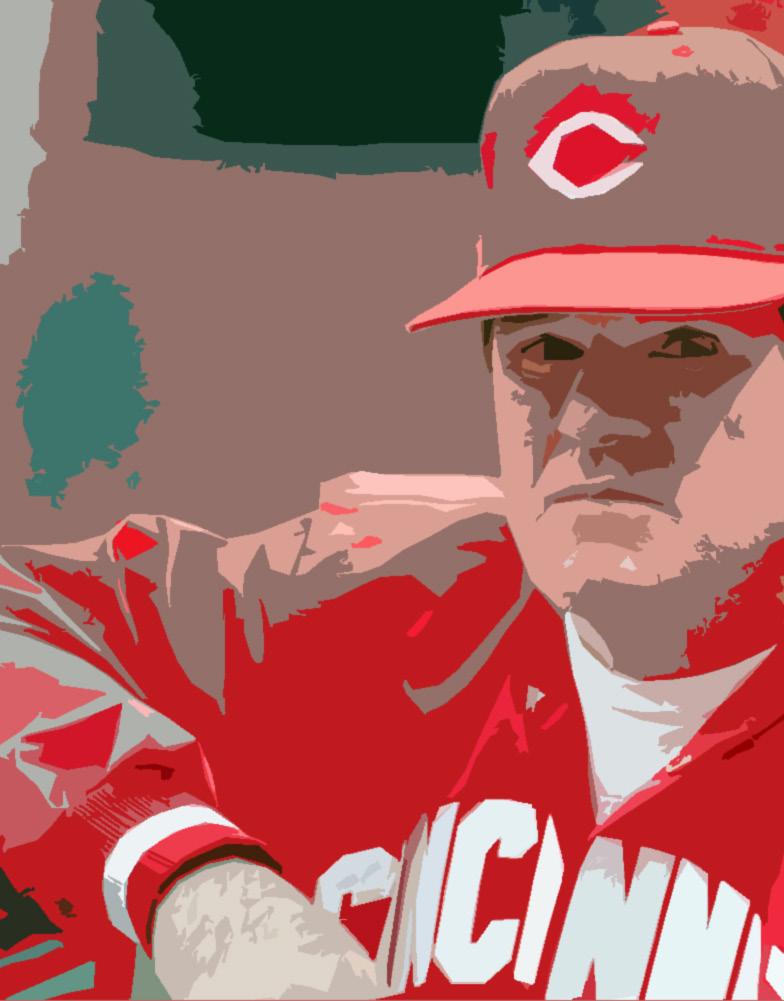
Should Pete Rose go into the Hall of Fame?

Pete Rose, the one-time star-crossed baseball superstar/gambler who helped deliver the Phillies’ first World Series championship in 1980, collected more hits than anyone who ever played in the majors.
That is an undeniable fact.
Under normal circumstances, that would make him a first-ballot Hall of Famer. No question.
There is nothing normal, however, around the wacky life and times of Peter Edward Rose, who died September 30, 2024, at the age of 83 – a development that, oddly enough, has made it possible for him to land in the Hall of Fame. More on that later.
Rose was known as “Charlie Hustle” when he broke in with the Cincinnati Reds in 1963 because he always ran hard (even on walks!), always played with unbridled enthusiasm, always did everything possible to trigger a victory.
But his nickname took on a new, sinister meaning when Rose was banned from baseball in 1989 by commissioner Bart Giamatti
BY SAM CARCHIDI
after an investigation unveiled evidence he bet on baseball while managing the Reds. Some of the bets involved games his team played.
Rose agreed to the ban, provided Major League Baseball (MLB) did not make a formal determination that he bet on games. Fifteen (15!) years later, Rose finally came clean in his autobiography. Yes, he bet on games, he admitted, saying he wagered on the Reds “every night.”
“I bet on my team to win every night,” he later said, “because I love my team.”
Because he bet on baseball, Rose’s name was not permitted on the Hall of Fame ballot. His place in baseball history was tarnished. He was a disgraced figure, according to MLB. (Oh, if only he had contritely admitted to it shortly after he was accused, he probably would have been in the Hall many years ago.)
As someone who covered the Phillies back in the day for The Philadelphia Inquirer – and had some one-on-one interviews with Rose when he managed the Reds – I had an annual Hall of Fame vote. I took the vote seriously. And for years, I voted for Rose as a write-in selection on my ballot. But he never came close to getting elected.
My feeling was that he didn’t live up to the Hall of Fame’s character, but that was trumped by how he performed on the field. I mean, 4,256 hits, three World Series championships, and 17 All-Star Games had to amount to something.
So, I was convinced I should put his name on my ballot as a write-in. For a while, anyway.
When Rose later admitted to having an affair with a teenager while he was married and 34 years old, that was conduct beyond the Hall of Fame’s “character” stipulation. I no longer wanted him in the Hall.
Rose made the situation even worse when he said he had sex with the teenager but thought she was 16, which would have made her old enough for legal consent in Ohio. She claimed she was 14 or 15 when they had the affair.
I didn’t think of Rose much after that. And then HBO came out with a compelling, four-episode documentary called Charlie Hustle & the Matter of Pete Rose last July – two months before Rose died of a heart condition, which put him in a wheelchair during his last public appearance at a Nashville sports memorabilia show.
The HBO show was based on interviews with Rose and many others, and it left it up
to the viewer to make a decision on how you viewed the Hit King.
Rose came across as such a tragic, demented figure who seemingly knew he didn’t have much time to live. He made money signing autographs and chatting with fans. From various interviews, you sensed that, since he was a youngster, all he wanted to do was please his father, become a star, and reach baseball immortality.
Suddenly, some sympathy started to seep into me.
Suddenly, I was conflicted.
Here was a man in his 80s who had admitted to all his flaws and seemed to have one wish before he died: To get enshrined into the Hall of Fame. He wanted to celebrate with his family, friends and the tens of thousands of Cincinnati fans who still had his back, warts and all, despite the embarrassment he had caused his native city.
The more I listened to once-vibrant Rose speak and watched the battered old man have problems walking, the more saddened I

Why were some shady Hall of Famers judged strictly on their on-field performances while Rose was held to a moral standard?

became. All his life he had strived to get into the Hall. Should his personal shortcomings deprive him of that? He was a womanizer, but that didn’t prevent many others, including Babe Ruth, from getting into the Hall. Rose bet on baseball, but that didn’t seem as egregious now that the sport was in bed with DraftKings, FanDuel and all the other sportsbetting sites.
Rose was still a despicable person, still a sexist, still without a filter. At one point in the documentary, he said to Amanda Ingram Brennaman, the wife of former Reds announcer Marty Brennaman: “Still got them jugs, don’t you?”
But what did his crassness and betting while managing have to do with what he had done as a player?
And aren’t there many despicable men whose plaques are hanging in Cooperstown?
Ty Cobb was a known racist with a violent temper. Yet, he was inducted into the Hall’s initial class in 1936. Cobb was described as a racist in several highly respected publications and had numerous altercations with Black people off the field, including one that led to a charge of attempted murder, per the New York Times No matter. Cobb was included on 222 of the 226 Hall of Fame ballots during the inaugural voting.
Another long-ago Hall of Famer, Cap Anson, repeatedly refused to take the field if the opposition had any Black players on its roster during exhibition games.
There are other examples of racists and alcoholics being elected to the Hall.
Right fielder Paul Waner (Hall of Fame class of 1952) fit the latter category, according to Casey Stengel, who won 10 pennants and seven World Series titles in his 25 years as a manager. Stengel once called Waner a graceful player.
The reason?
“He could slide into second base without breaking the [booze] bottle in his hip pocket,” he said.
The Hall of Fame is filled with drunks, racists, cheaters (spitball pitcher Gaylord Perry, who also admitted to using many foreign substances on the ball), and drug smugglers (Orlando Cepeda).
So much for the “character clause” that is sent to Hall of Fame voters.
Bottom line: Why were some shady Hall of Famers judged strictly on their on-field performances while Rose was held to a moral standard?
Rose’s Hall of Fame chances took a remarkable turn on May 13, 2025, when MLB commissioner Rob Manfred said, “Permanent ineligibility ends upon the passing of the disciplined individual.”
That made Rose and 16 others who had been disciplined – including former star “Shoeless” Joe Jackson and seven teammates from the Black Sox betting scandal in 1919 -eligible to be considered for the Hall of Fame. The earliest Rose can be considered by the Hall’s Classic Baseball Committee is in December of 2027.
Rose predicted this would happen, saying in one interview, “When I die, they’ll make me eligible.” Ten days before his death, in another interview, he basically repeated that assertion. “I’ll make the Hall of Fame after I die,” he said.
According to an ESPN report, that made his bitterness grow.
“What good is it going to do me or my fans if they put me in the Hall of Fame a couple of years after I pass away?” he said. “What’s the point? Because they’ll make money over it?”
Rose wasn’t the first baseball star to be flawed; he deserves to be in the Hall because of his unquestioned excellence on the field.
It’s just a shame that, if the day ever arrives and he is enshrined, he will be under a tombstone because Major League Baseball lacked the spine to make its decision before he passed. n

BY MARK ECKEL

As John Kruk’s 10-year Major League Baseball career began to wind down what did he think he would do in the second phase of his life?
“I was hoping I didn’t have to do nothing,” Kruk said. “But that changed. I had to do something. When I retired, I was 33 or maybe 34. So, I had to do something.”
For the past nine years, Kruk has been part of the Phillies television broadcast team sharing time with Ruben Amaro Jr., Ben Davis and Cole Hamels as color analyst, while working alongside play-by-play man Tom McCarthy.
Before that, the former Phillies All-Star and member of the 1993 National League champions worked 13 years for ESPN, first as a studio host and then as an analyst on Sunday Night Baseball.
Being on TV wasn’t at the forefront for Kruk, who began that second phase of life coaching in the Phillies system. Then it all came about one day when he found a note in his locker.
“It wasn’t in the game plan,” Kruk said of broadcasting. “It was spring training, and I was coaching in Reading [Pennsylvania] and somebody left a note in my locker. Normally, I’d never call those people back. For some reason, I called, and it happened to be an agent. He said they

were starting this show out in Los Angeles, it was called The Best Damn Sports Show Period. I asked him does that mean they want me? He said, “No, you would have to go out there and audition.” Now, I’m like, “Okay.” But I flew out there for the day and did the audition. By the end of the baseball season, they hired me. So that’s how it all started.”
Kruk was the baseball figure on the show that also included Reggie Theus (basketball), Deacon Jones (football), actor Tom Arnold and the host, Chris Rose in its debut season.
“My wife was pregnant with our son. After he was born, I was trying to go back and forth from Philly to L.A. It was tough. I kept in contact with the Phillies when they were building Citizen’s Bank Park, I was helping them, trying to sell suites and things like that. Then this same agent called and said, ‘What do you think about working at ESPN?’ I didn’t even know they were in Connecticut. My wife and I talked about it and thought it would be a good move to go to work at ESPN.”
KRUK WORKED IN THE STUDIO with Karl Ravech doing Baseball Tonight before moving to the booth to do the Sunday night game as the analyst next to play-by-play man Dan Schulman.
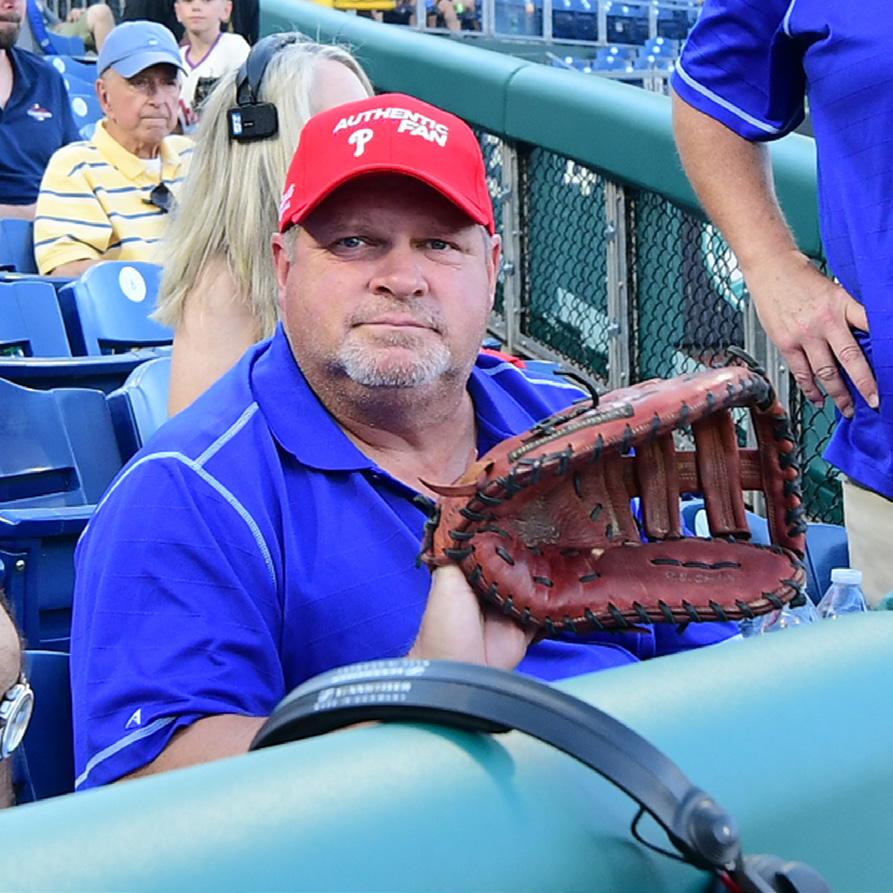

‘‘
IT’S HARD TO EXPLAIN TO SOMEONE WHO’S NEVER PLAYED IN PHILLY WHAT IT’S LIKE TO PLAY IN PHILLY.”
“I’d rather do the games,” he said. “I like when you have to think on your feet. I also like it because it’s not scripted. I try to notice things that are going on the field and point them out to the producer to show a replay. You hope to get one of those a game. I don’t think I could do radio where it’s just constant talking. And replays are irrelevant on radio.”
Like several former Philadelphia athletes in all four sports, Kruk came back to the city in 2017 when the Phillies called.
“There’s just something about [Philadelphia],” Kruk said. “It’s hard to explain to someone who’s never played in Philly what it’s like to play in Philly. When we do games now, we talk to the other announcers from the other teams, and they’re amazed at the passion we have here. I mean it’s sold out almost every dang game. It just gets in you. The last thing I ever wanted to do was live in a city-type atmosphere. I’m not

a fan of cities, big cities. There’s just something about playing here, and now working here. It doesn’t feel like a big city. It feels like 40,000 people out here cheering and you’re a part of it.”
Those 40,000 are almost 10 times as many people who live in Keyser, West Virginia, a small
town across the Potomac River from Maryland, where the population is less than 5,000 and where Kruk was raised.
“It was three older brothers and me and our parents couldn’t wait to get out of the house,” he said.

WITH VELOCITY, THE ART OF PITCHING IS DOWN. GUYS COME IN AND THROW. THEY DON’T PITCH. THEY JUST THROW. THERE’S NO LOCATION NOW.”
WAS KRUK’S WAY OUT. Although like becoming a broadcaster, baseball wasn’t number one on his list.
“We played all sports. Baseball wasn’t even close to how much I loved playing basketball,” Kruk said. “After high school, I didn’t get an offer to play baseball. Every Division 2 school in the state of West Virginia recruited me to play basketball. I went to a Junior College to play basketball; if I wanted to play baseball I could try out for the team. I realized right away how
talented some of these basketball players were. It was a faster-paced game than I was used to [in high school]. Then the right fielder on the baseball team hurt his knee playing football, so the baseball coach kept asking me to come out for the team. I was a good high school player, but I never played the outfield, I played shortstop. Our high school team wasn’t great. My older brother and I were the two pitchers on the team. When I pitched, he played shortstop. When he pitched, I would play first base. My brother convinced the coach that when he pitched, he wanted me at shortstop. Now they put me in right field, and I was lost. But I guessed it worked out all right.”
It sure did. Kruk was drafted out of Allegany Community College (Maryland) in the third round (62nd overall) of the 1981 draft by the San Diego Padres. He played three full years for the Padres being before traded to the Phillies during the 1989 season for outfielder Chris James.
In his five-plus seasons with the Phils, he went to three All-Star games. And in his 10 seasons, the final one with the Chicago White Sox, he hit over .300 eight times. His lowest batting average for a season was .291 in 1990, his first full season in Philadelphia.
THE GAME THAT KRUK PLAYED in the late ‘80s and early ‘90s is not the same one he broadcasts today. In 2024 a total of seven players batted over .300, including Atlanta’s Marcell Ozuna who checked in at .302. Pitchers threw 26 complete games over the 162-game season, a record low. Yeah, the game has changed.
“When I played the other team decided how long the pitcher lasted,” Kruk said.
“I think if you ask the players, especially starting pitchers, they would say they want to go deeper. I heard [Pittsburgh star pitcher] Paul Skene say, ‘I trained my body to not just throw 100 pitches a game, but to throw however many I need.’ His goal every game is to go nine innings. But it’s just not the way things are done anymore.”
So, what happened?
“Velocity is up across the board,” Kruk said. “With velocity, the art of pitching is down. Guys come in and throw. They don’t pitch. They just throw. There’s no location now. Sixty to seventy-five percent of pitchers just throw. The guys who can pitch are successful. Everyone asks me about hitters now with the elbow guards, face mask, shin guard. I never wore any of that stuff. But when I see some of these guys pitch, I don’t blame them.”



And what about the hitters? Why is .235 an OK batting average these days?
“Pitchers aren’t afraid to walk guys anymore,” Kruk said. “I’ve seen pitchers throw sliders on a 3-0 count. I think that’s why batting averages are down. Pitchers would rather walk you than give you a cookie to hit.”
And don’t get Kruk started on the A-word.
“Here’s the thing with me and analytics,” he said. “When analytics came in it was OPS and whatever, whatever. They discounted batting average. I got into it once with an analytics guy. I asked him, ‘Why do you discount batting average?’ He said, ‘It’s not important.’ I said, ‘Well, isn’t it part of the on-base percentage?’ It kind of stumped him. Which was nice.
“Now to validate when people discounted OPS, they [then] came up with OPS plus and WAR plus and this plus and that plus. They keep changing the narrative. If analytics worked 15, 20 years ago, then why do they keep changing it?”
Kruk does see some change this season. It’s not all the way there, but maybe it’s getting there.
“Teams are starting to go back,” Kruk said. “Well, they’re always going to use analytics, but I think teams are going, ‘Ok here’s the analytical information but go out and play your way.’ And I think that’s smart, trust your players. The Phillies this year have done a better job of putting balls in play and surprisingly they’re scoring more runs. It just makes sense doesn’t it.”
What about the pitch clock, bigger bases and putting a man on second in extra innings?
“As an announcer, I like [the pitch clock],” Kruk said. “I’m not sure as a player. There were some pitchers who were slow or who threw over
[to first] 20 times. And some hitters, I don’t want to call them rituals, but you know. So. . .
“I don’t like bigger bases. Guys need to learn how to slide. Sliding gloves, some of these guys have an extra 2-3 inches when they slide with that oven mitt on. I don’t like that.”
And the extra inning rule?
“We played some long games,” Kruk recalled. “I remember a 20-inning game. I know why they did it, to protect pitchers. And baseball is doing everything it can to protect pitchers, and I get it. But there was something about playing those long games. Mike Williams pitched eight innings of that 20-inning game. That will never happen again. As an announcer, I like it because there’s always stress. You start with a runner on second. But overall, I’m not sure.”
Kruk is sure about one thing. He loves doing what he does. Instead of driving in Lenny Dykstra, or setting up Darren Daulton and Dave Hollins, he’s sitting next to McCarthy and explaining what’s going on to most of those same Phillies fans who cheered for him back in the day.
“I love Tom,” Kruk said. “I love working with him. I’ve been so lucky through this second phase of my life. Carl was great to work with. Then Sunday night, Dan was unbelievable. Now working with Tom is great. I couldn’t have asked for anything more from those three.” n






BY JAN L. APPLE
OOwls, hawks, opossums, squirrels, songbirds, rabbits, foxes, baby skunks and more. All are integral to the ecosystem and wildlife throughout South Jersey. We may not even think about these
animals that surround us as we go about our daily lives. Yet many become injured, orphaned or sick and can often be rehabilitated and ultimately returned to their natural habitat.
Enter Woodford Cedar Run Wildlife Refuge in Medford, comprised of 171 acres of preserved land within the Pinelands National Reserve. Cedar Run encompasses a Wildlife Rehabilitation Hospital, the Woodford Nature Center, hiking trails, a summer camp, environmental educational programs for all ages (on and off-site, including schools and senior centers) and hosts an array of special events.
“We take in and treat almost all species native to New Jersey,” explained Mike O’Malley, executive director of Woodford Cedar Run Wildlife Refuge. These include mammals, birds and
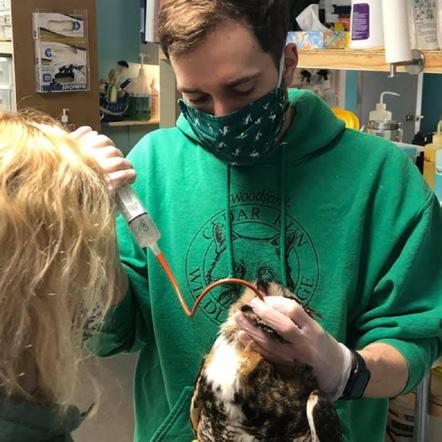
reptiles. “Our mission is to serve as a community resource on the importance of protecting and enhancing healthy ecosystems for all,” said
O’Malley, pointing out that they are the biggest and busiest wildlife refuge in New Jersey and the tri-state region. More than 20,000 people visit the refuge every year. And their multipronged mission – including preserved land, a nature center, wildlife rehabilitation and environmental education – is what sets them apart.
Cedar Run was officially established in 1957 by Jim and Betty Woodford, who built their first home on the land overlooking a lake. The couple had initially purchased 185 acres of land as a summer retreat in 1951, but their love of the property led them to reside there year-round.
The central mission of the wildlife refuge was born when a local resident brought an injured owl to Betty Woodford to see if she could offer assistance. Over the next four decades, the Woodfords were deeply immersed in the preservation of the Pinelands, wildlife rehabilitation and environmental education. Betty Woodford became known as a “local authority on the flora and fauna” of the Pinelands as well as an “expert botanist, naturalist, nature photographer and wildlife rehabilitator.”

In 1982, Cedar Run became a 501(c)(3) environmental non-profit organization and continued to evolve in leaps and bounds. In 1997, the property and buildings (including the former family home) received a Green Acres grant, which ensured that the land and structures would be preserved. The buildings then opened to the public and now house administrative offices, the hospital and nature center.
Cedar Run employs about 26 staffers – full and part-time – who work in partnership with a nine-member Board of Trustees. Jeanne Woodford, Cedar Run board president and

co-founder, is the daughter of Jim and Betty Woodford. Her ongoing work perpetuates her parents’ lifelong passions.
In addition to the staff and board, O’Malley explained that about 250 volunteers – ages 16 through those in their 80s – enable Cedar Run to do what they do. “Volunteers are the lifeblood of the organization, he said.
“We are an emergency facility,” continued O’Malley. “We never know what is going to come through the door.”
O’Malley initially became involved at Cedar Run in 2011 when as a Stockton University student pursuing a bachelor’s degree in environmental science, he applied for an internship at the rehabilitation hospital. “I knew I wanted to do something with wildlife,” recalled O’Malley who also holds a master’s degree in non-profit leadership. “When I started doing the work and saw the impact, I fell in love.”
In 2014, while working in Cedar Run’s hospital, O’Malley became a licensed wildlife rehabilitator. He joined the staff in 2015 and was named executive director in 2021.
O’Malley explained that in order to be licensed as a wildlife rehabilitator at Cedar Run one must participate in an apprenticeship program through the New Jersey Fish and Wildlife Division of the Department of Environmental Protection. The staff members at the hospital participate in this program. A crew of volunteers, he added, is always on hand to work with staff. They also rely on the expertise of veterinarians. “One of the requirements is that we work in collaboration with a veterinarian,” he said. “Our dream is to someday have our own full-
“Last year, the hospital treated over 170 different species. We took in over 7,700 sick and orphaned animals.”
time vet on site.” For now, he explained, they are grateful that veterinarians from the Animal and Bird Health Care Center in Cherry Hill volunteer their services.
“Last year, the hospital treated over 170 different species,” said O’Malley, who resides in Medford. “We took in over 7,700 sick and orphaned animals and received over 17,000 phone calls.” O’Malley stated that each year the number of animals treated has increased and has actually doubled since 2011.
“Rabbits represent the greatest percentage of our intakes, over 1,500 annually,” said O’Malley. “We treat lots and lots of songbirds.” He underscored that songbirds are an order with great diversity, with dozens of different species.
Many of the calls seeking help come predominantly from residents throughout Burlington and Camden counties, and some from Gloucester County. Scenarios vary widely, but calls are

often placed by community members who may see an injured bird on the side of a road, a fawn (baby deer) on their property that appears in distress or a baby rabbit struggling to move.
O’Malley noted that Cedar Run does not rehabilitate adult deer, only fawns.
No matter what species someone may find, O’Malley encourages people to call Cedar Run

before getting too close or touching an animal. “We ask folks to give us a call so we can provide them with expert advice,” he said.
Cedar Run is open seven days a week; the hospital is open 365 days a year. According to O’Malley, most of the wildlife brought to the hospital are the result of “good Samaritans” with a desire to aid wildlife in distress. “Perhaps you’re
driving to Wawa and see a hawk on the side of the road that has been hit,” he said. “If you give us a call, we’ll walk you through the steps of what to do.”
Some wildlife, O’Malley elaborated, such as raccoons, groundhogs, skunks and bats, have a higher incidence of rabies than other mammals. Known as rabies vector species, O’Malley cau-

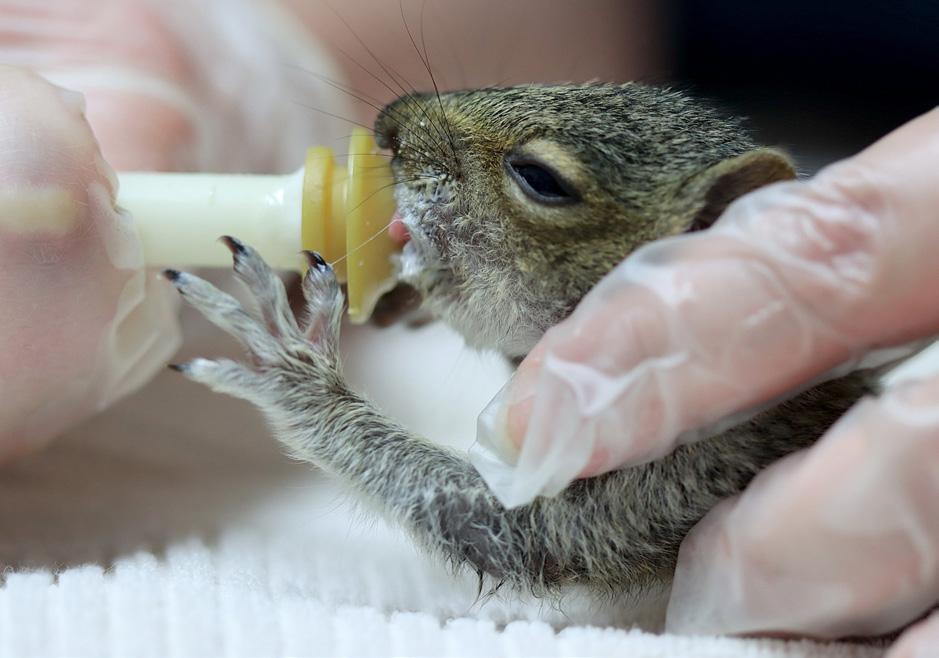
tions that it would be dangerous to approach these mammals. Instead, in such cases, a call should be placed to a local animal control office.
O’Malley, a certified fund-raising executive (CFRE), points out that as a non-profit organization, the overwhelming majority of funding comes from the generosity of private donors, with about 10 to 15 percent from grant funding. Cedar Run’s environmental education program also brings in some funds as well as an array of special events. As a CFRE, O’Malley explained that supporters can be assured that the organization is adhering to the highest ethical standards.
“Fortunately, we have a long history of being embedded in the fabric of the local community,”
said O’Malley, who continues to look to the future. “Our biggest long-term goal is to expand the capacity of our hospital.”
The impact and reach of Cedar Run cannot be overstated. “Nothing can really compare with the feeling of rehabilitating an animal and releasing it back into the wild,” said O’Malley. n
Cedar Run Wildlife Reserve
4 Sawmill Road, Medford, NJ 08055 (856) 983-3329
Wildlife Rehabilitation Hospital
6 Sawmill Road, Medford, NJ 08055 (856) 983-3329 x107
www.cedarrun.org



The NJ State Barbeque Championship is returning to Anglesea this July, in North Wildwood. JerseyMan caught up with Todd Price of the SmokeAholics, a yearly competitor, to talk about high level BBQ.
BY KURT SMITH


courtesy Todd Price
is “fall off the bone” ribs, Chef Todd Price has an interesting tidbit of info for you.
“If your ribs are falling off the bone,” he says, “they’re cooked wrong.”
He’s not judging. It’s meant as an epiphany for ribs fanatics.
“I’m not gonna put anybody down that eats them like that,” he says. “I’ll eat them like that, I don’t care. It’s just that there’s a difference between barbeque competition and barbeque for your backyard. There is a difference in taste, too, but most people don’t recognize it.
“When you cook ribs and they fall off the bone, it gets the pork mushy. You chew it in your mouth a little bit and push it up with your tongue, up
against your palate. If it sticks there, and it most likely will, that’s one sign that your meat is overcooked.
“ You want them to pull away from the bone, but when you want them to pull away, not when the meat feels like pulling away from the bone.”
He adds a braggadocious-sounding assertion, but it’s just helpful advice for aspiring BBQ enthusiasts.
“I guarantee you, if you had my ribs and you had a rack of ribs next to you, it’s falling off the bone, mine are gonna be better.”
Price can go into similar details about any aspect of professional BBQ. After graduating from the Culinary Institute of America, he spent time preparing food in uber-expensive Manhattan restaurants, but he decided rightly that comfort food was a better use of his education.
“I got my first smoker from Lowe’s, an old Oklahoma Joe. Really nice smoker. They were basically giving it away, because they’d used it for employee lunches and stuff.”
His first foray into competitive BBQ went well. “It was the Garry Maddox Rib Challenge at Citizens Bank Park, when it was being built. We took home every award, first place. We won a trip to the World Series.”
The victory earned him enough notoriety to cater Eagles tailgates for several years, another venue where lacking skills isn’t an option.
Just saying, if you’re planning to compete in the New Jersey State BBQ Championship, guys like Todd Price are who you’ll be up against.
Bring your “A” game. And keep the ribs on the bone.
This scribe is a far, far cry from being able to compete in a BBQ competition. Going beyond the Weber grill in the backyard is still an alien concept. But even if you’re at that level, there are simple ways to make your BBQ better. Todd Price is happy to offer plenty of advice:
Have different zones on the grill – “Have a hot side and a cooler side. That way you can have someplace where you can easily move your food around, so you’re not redoing it.”
Don’t add sauce till it’s done – “Another big mistake that a lot of people make. Their chicken comes out all black and stuff. They wonder, why is my meat burning up on the grill? Well, because it’s full of sugar, dude.”
Use marinades properly – “If you marinate a filet mignon overnight and put that thing on the grill, I guarantee you you’re gonna say, ‘Why is it all mushy?’ Whereas, if you have a New York strip, that’ll hold up to an overnight marinate. The tougher the cut, the longer the marinate.”
Know how to cut your meats – “It’s got to be cut on an angle across the grain. Because if you don’t do that, you’re gonna be chewing it forever, and it makes a huge difference.”
Be prepared – “Have everything that you need so that you don’t have to run around at the last second. Always have a spray bottle handy if you’re cooking out back with water in it, so you don’t have to waste your beer, which I actually just did at a friend’s house.”
And one very important tip for aspiring competitors:
Stick with whatever works, religiously – “Competition BBQ is about repetition. Once you find that one thing, you can’t change a damn thing about it. If you’re using a certain tomato sauce, don’t go and buy John’s because ‘It’s cheaper, it’s the same stuff.’ It’s not.”

The New Jersey State Barbeque Championship in North Wildwood is now in its 27th year. It’s one of the oldest BBQ competitions on the East Coast. It was started as (and still is) a fundraiser by the Anglesea Fire Company and has grown from 22 competing teams in its inaugural event to close to 70 in 2025. The event takes place this July 11-13.
The Kansas City Barbeque Society (KCBS)…an organization of over 16,000 barbeque enthusiasts…sanctions the event. Yes, if you commit any barbeque sins, Kansas City is watching. KCBS has very strict rules, right down to acceptable garnishes and their placement.
As the event’s website warns, “It is important that you know what you
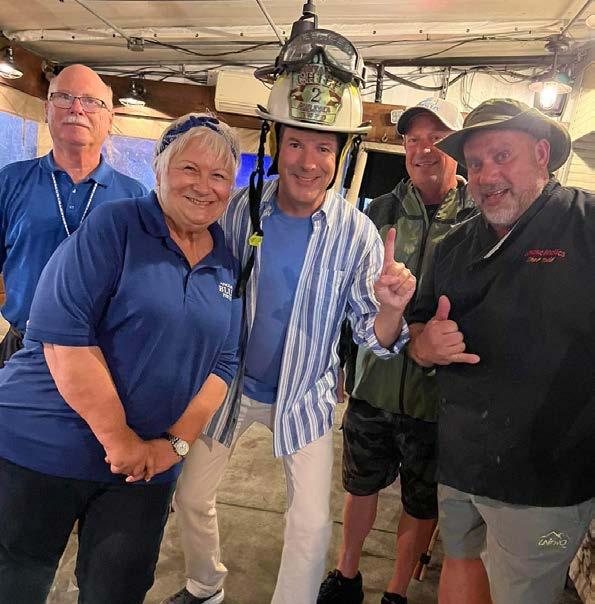
the event’ S web S ite warn S , “ i t i S i M portant that you know what you are G ettin G into.” p rice know S that’ S no exaGG eration.
“There are six judges at a table, you’ve got to put six ribs in a box. There’s a table captain, he walks around and shows everybody the box, they go, ‘Ooh,’ and they score you for that.
“They each pull a rib out of the box. If your rib is connected to another rib, it might pull out with it. I’ve seen it happen; somebody is getting a DQ. They can’t reach in there and shake it off.
“They’re gonna hold the rib, and bite into the middle of the rib. When you pull that rib away, you should see a clean bite mark. You’re gonna see the bone in front of their face when they pull it away, that bone should turn from gray into a bone white. You’ll see the moisture leave the bone. That’s what they’ll call a perfectly cooked rib.
Competitors are judged on presentation, feel, aroma, and of course the taste of their chicken, pork, ribs, brisket and other items. The champion is the team with the highest combined score.
Judges must be official KCBS judges. As per the NJ BBQ website, they
If this article was the first you’d ever heard of the Kansas City Barbeque Society (KCBS), you’ve probably never been in a BBQ competition. It stands to reason that an organization dedicated to the worldwide improvement of cooking meat outdoors would get its start in the BBQ Capital of the World. BBQ culture in Kansas City goes back to the early 1900s, when a steamboat cook named Henry Perry gained notoriety selling smoked meats wrapped in newspaper. Today K.C. is home to Arthur Bryant’s, Gates, and dozens of other world-renowned palaces of barbeque.
According to KCBS’s website, the Society was founded in 1985 by Carolyn and Gary Wells and Rick Welch (a.k.a. “Sir Loin”). They had been participating in local BBQ competitions and noticed that there wasn’t a source for information for upcoming events. Remember this is 1985, when the idea of a “World Wide Web” would seem like a Hitchcock movie idea.
They founded the Society with the mission to “celebrate, teach, preserve, and promote barbeque as a culinary technique, sport, and art form.” One of their initial rules was that taking any of it seriously was grounds for disqualification. It started with 20 members, who for a $12 annual fee received a printed newsletter called The Bullsheet.
Four decades later, KCBS is still going strong. It has over 16,000 active members, and 78,000 followers on Facebook. They still faithfully publish The Bullsheet and sanction over 375 BBQ competitions a year.
One could argue that, given the organization’s exponential growth and dedication to strict competition rules, they’ve gone beyond not taking things seriously. But maybe meeting those challenges is part of the fun for BBQ enthusiasts.
If you’d like to learn more and possibly join the Kansas City Barbeque Society, the website is www.kcbs.us.


must swear to be completely impartial, “so that truth, justice, excellence in Barbeque and the American Way of Life may be strengthened and preserved forever.” They must face Kansas City while reciting the oath.
Unfortunately, the competition chow is for judges only; participants aren’t allowed to serve it to folks attending the event. Visitors can partake of eats and libations from vendors, but not the competition food.
That’s a bummer, but it’s understandable how it could complicate things. Competitors have enough on their plate, so to speak.
That said, if you want to know how to kick some barbeque tail, the event is a great place to learn. Price can share a wealth of knowledge about smokers, meat probes, trailers, different types of wood, and the advancements in BBQ methods. He says many others will too.
“A lot of the guys like myself, they’ll talk to anybody,” he says. “You want to step up your game and get the pellet smoker, these are perfect guys to talk to. Anything that’s new and good, these guys are using it.
“ i f you’re into boat S , you’re G onna G o to boat S how. i f you’re into barbeque, you G o to the barbeque co M petition.”
“If you’re into boats, you’re gonna go to boat show. If you’re into barbeque, you go to the barbeque competition. You get to see a lot of this stuff in action.”
It may also be worth the trip to see if Price’s SmokeAholics or another challenger can topple Chunky BBQ, who’s won the last three competi-

In addition to a fun Jersey Shore event showcasing barbeque competitors at the highest level, the town of Anglesea throws in a bonus…the Anglesea Blues Festival takes place at the same time, in the same spot.
There is a separate website devoted to the Blues Fest (although it’s clearly created by the same folks), with the list of acts, the band schedule, and vendor information. The 2025 event will feature The Outcrops, The Michael Allman Band (yes, he’s related…Michael is Gregg’s son), Bluestime, SlideWinder Blues Band, and many more. You can read more about all the acts on the festival website.
The main stage will be on the corner of Olde New Jersey Avenue and 2nd Avenue, a couple of blocks from the competition area. Nothing like the sound of the blues with the smell of BBQ pits.
This scribe asked ChatGPT why blues music and barbeque seem to go hand in hand. In its response, his brainy sidekick stated:
“Blues music is raw and emotive—it tells stories of heartache, resilience, and daily life. BBQ is similarly soulful: it takes patience, care, and attention to craft. Neither is flashy, but both are rich with depth and feeling. They’re workingclass arts, passed down through hands-on experience, not textbooks.”
Anglesea Blues Festival website: www.angleseablues.com.
tions. Price knows beating them is a formidable task.
“If, say, Chunky finds what works for them in Wildwood, okay, they figured that one out. So they go to Vermont, New Hampshire, whatever. They put maple barbeque sauce on up there. How are they getting that one, too? Because they’re winning all over the place. Their trophy list is extensive.”
Even for someone good enough at BBQ to win a World Series trip, Price acknowledges that this contest is a whole new level.
“We went from doing the Garry Maddox Challenge to ‘Oh, we gotta find more contests.’ I found the one in Wildwood. ‘Wow, we’ll do that one.’ I went in with a big ego and I got smoked.”
Pun intended. But since then, the SmokeAholics have fared better. In one recent event, they placed first in brisket, third in chicken, and sixth in pulled pork. Only a middle of the pack ribs finish denied them the title, and no, it’s not because judges want ribs to fall off the bone. He used a different seasoning than a brand he trusted and paid the price.
Even with all of the expertise Price has to share, he hasn’t taken home the trophy yet. But to him, it’s about bringing his best and delivering great grub.
“I worked at Per Se in New York, dinner for two is like a thousand bucks. Real high-end, fine dining. But barbeque is just as technical. It may not look as pretty, but it’s really hard to pull off if you want it good...
“I do this not to win, I do it because I love doing it.” n



BY MIKE SHUTE
SINCE 1853, six generations of the Heritage family have been farming the same land in Mullica Hill, NJ, tending primarily to fruit tree orchards on the 150 acres of property that lie just off of Mullica Hill Road (U.S. Route 322) and butts up against Richwood Road (County Route 609), in practically the dead center of Gloucester County. Agriculture has long been a staple of the region with various family farms and corresponding farm markets dotting the roadways throughout the area.
But in 1999, the Heritages, led by Bill and Penni Heritage, began to convert their farm from their annual harvests of apples and peaches, seeking a new avenue to utilize their land — and a winery was born.

It has exploded from an idea with a certain level of risk into a booming success in the area as a family-friendly place to hang out. In fact, William Heritage Winery (WHW) has twice been chosen as New Jersey’s Winery of the Year, earning the distinction in both 2011 and 2014 from the Garden State Wine Growers Association. And their wine has been a hit with consumers and critics.
“Our roots run deep in this area, so Mullica Hill and Gloucester County are very important to us,” said W. Richard Heritage, the winery’s director of sales & marketing/general manager as well as the oldest son of owners Bill and Penni (who’ve been married for 40

years). Younger sons Bryan (production manager) and Erik (vineyard manager) round out the Heritage family’s management team. “We would like to continue to see as much farmland and open space preserved in this area as possible. Agriculture has always been an important piece of this area’s history and hopefully we can inspire more farms and business
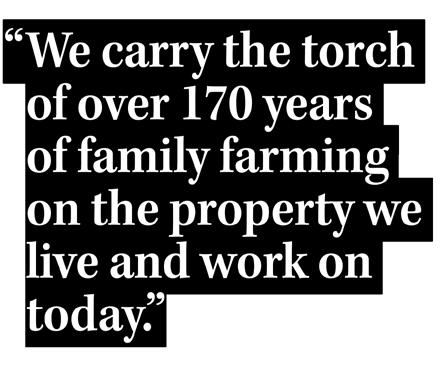
leaders to preserve agriculture and green acres in our community, not to mention cultivating interest in farming in future generations. I think the popularity of farm wineries, large pick-your-own flower fields and trendy new garden centers are all positive signs.
“The business of farming is everything to us.
Not only is it a part of our identity, we carry the torch of over 170 years of family farming on the property we live and work on today,” Richard continued.
“In the early 90’s our family farm was struggling to survive financially. The market prices for peaches and apples continued to fall while the costs of running the farm continued to

rise. Other local farms in our area were starting to reinvent themselves with hayrides, corn mazes and pick-your-own produce. This became loosely defined as ‘entertainment farming.’ I always found it interesting that a corn field could be more profitable as a corn maze as opposed to selling the bushels of corn
as produce. We knew that we would need to find our new niche to survive.
“ We decided to try a handful of new activities on the farm including selling local produce at a small farm market we had built, and other ‘entertainment farming’ activities. The wine portion was just one of a handful of projects we took on to try and breathe new financial life into the family farm,” Richard explained.
“Our parents attended a few farm conferences and learned that wine grapes grown in New Jersey were fetching premium prices from local wineries. They decided to plant a couple of acres of grapes with the intention of selling the grapes. I remember, I was about 12 years old when I helped my father plant our first Chardonnay vineyard. It felt very new and adventurous to be planting wine grapes in Mullica Hill. As the vines matured, my parents decided they should try to apply for a wine license to make our own wine instead of selling the grapes. There were no wineries in Gloucester County at that time. With some help from friends who were home winemakers and lots of ‘how-to’ video tapes from the University of CaliforniaDavis, we were able to release our first vintage of Chardonnay in 2002. We sold the wine at our farmstand alongside the local produce.
“As time went on it was clear the winery was going to be the best option for us to grow our business and support future generations

on the farm. Around 2009 we started phasing out some of the hayrides and corn mazes to grow the winery.”
Today, the winery is humming seven days a week. With weekly summertime events like every Thursday’s Vino & Vibes — combining relaxing summer nights with flavorful wine, creative offerings from food trucks and a variety of live musical acts — people visit from all around the region to enjoy the chilled out and family-friendly atmosphere that William Heritage Winery offers.
The annual Labor Day weekend William Heritage 5K — set this year for August 31 — is hosted in partnership with Run the Vineyards and Good Day For A Run, LLC. This chip-timed, USA Track and Field-certified course takes you through the beautiful grounds of William Heritage Winery, featuring a mix of paved and vineyard terrain. All runners, 21-and-over, receive a complimentary glass of wine at the finish line. There’s also a 1-mile fun walk and a kids race too. It’s one of, at least, two 5K races held on the Heritage grounds per year.
During the fall, celebrate Harvest Weekends with live music and food trucks, and enjoy the scenic fall foliage of the rural area in the laid-back yet ample outdoor seating area. The holidays are a great time to gather and recon-
nect with friends and family at WHW to enjoy special seasonal wine tastings or you can take advantage of their Black Friday sales and gift

card deals. And throughout the month of February, visit with your valentine for wine and chocolate pairings. They can host your private event as well, any time of year.
Conveniently located just along the same corridor that leads vacationers from southeastern Pennsylvania to Route 55 and eventually the Jersey Shore, William Heritage Winery has the good fortune of being in a prime spot along a very busy thoroughfare. But at the same time, they wouldn’t succeed or have return customers, if they didn’t have great products.
“The location of our business has been a big contributor to the success of our winery and our growth. As the old business saying goes, ‘location, location, location.’ We made a tough decision when we first started to not build the tasting room at the actual winemaking facility. Instead, the tasting room was set up at our farm market on the busier road (Rte. 322), which is on the opposite side of our farm. The drawback of course, is that our customers would not see much of our wine barrels and vineyards when they sample wine. But we felt positioning the wine tasting room where there was more traffic and visibility would be more beneficial to the business. In the end this worked out for us.”
And the wine certainly hits the mark. In November, the winery captured three awards from the 2024 NJ Wine Competition and the Garden State Wine Growers Association, including the Governor’s Cup for Best in Show with its 2023 Ice Cider.
“We have always had a diverse product offering. Trends in the alcohol business are constantly changing and evolving and we are always looking for new ways to satisfy those








demands while remaining true to quality.”
Just this summer, William Heritage Winery’s creativity has come to the forefront. It has added a new offering that is not only found at the winery’s home in Mullica Hill but also at its relatively new tasting room in Haddonfield, as well as select liquor stores in the area. They developed their first canned wine-based cocktails with two varieties making their debut last month: Jersey Spiked Blueberry Lemonade and Jersey Spiked Peach Berry Tea. Both come in 12-ounce cans and are deliciously light and refreshing choices for your summertime soirees. The lemonade variety is made from blueberry wine, real lemon juice and natural flavors while the tea variety is made from peach wine, tea, cranberry juice and strawberry natural flavor.
“Consistency is hugely important to us. We always aim to exceed expectations with the quality of our wines and to do that it takes a massive investment in farming quality grapes,” Richard said. “Six generations of farming makes this a passion and a strength of ours. Also, we have always hired winemakers with top-level industry experience. Hats off to them for bringing an incredible skillset to our vineyard and crafting such amazing wines. In addition, many of our sweeter style Jersey Wines are available in most New Jersey liquor stores. Consistency is key to maintaining our shelf space in liquor stores because they are a very competitive space and it’s important that those customers are getting a reliable, highquality product with each return purchase.”
“Though there are many changing trends in the alcohol space, we have found that highquality red and white wines will never go out of style. These are the beverages that pair best with food and anchor our wine program. With each year we learn a few new things in the vineyard and the winery so these core wines (Chardonnay, Sauvignon Blanc, Cabernet Franc, Cabernet Sauvignon) just keep getting better. When guests visit our wine-tasting rooms, we want them to know they are getting some of the highest quality wine grown in their home state and the proof is in the glass. We have also received 90-point ratings from national wine magazines such as Wine Enthusiast, The Wine Advocate, James Suckling, Decanter and Wine & Spirits. To be honest I didn’t think we would ever get ratings like that for our wines, and we’re truly humbled by this. Beyond that we will also continue to innovate and surprise our fans with new exciting things.” n
To learn more about William Heritage Winery, visit www.heritagewinenj.com.


Photograph by Jamie Dunek





















We are proud to introduce you to our private business network
H Do you want to expand your network in Philadelphia and South Jersey?
H Do you want to create powerful connections with other business professionals in the area?
H Do you want to attend exclusive networking events twice per month at local venues?


Martin H. Abo Abo and Company, LLC
Ross Akselrad Pulse Entertainment/Productions
Alexis Allegretto Surety Title Company Joe Allen Sonitrol
Chris Ambruch Alcom Printing
James Andreacci OceanFirst Bank
Joel Ardman Carroll Engineering
Liz Arking Weichert Premier*
Bob Arnold SeatonHill Partners LP
Keith Asplundh Asplundh
Suzanne Aumack AUMOST Creative Group
Keith Baldwin Spike’s Trophies & Awards
Ed Barlow III Barlow Auto Group
Michael Barreto Metropolis Passenger Logistics
Catherine C. Barrett Cat’s Mobile Massage, LLC
Brian Barry Keller Williams Cherry Hill
Robert Beach Procision Commercial Realty & Procision Business Brokers
Robert Bender The First National Bank of Elmer
Tom Bentey Suburbanite Productions
Manny Bermudez Citizens Bank
Tom Bernetich BDO USA, LLP
Harry Bickel Precision Benefits Group



Brian Bielawski Dynamic Advertising Solutions*
Michelle Bishop REAL Broker Matt Blatz PCS
Christine Blithe ARS Truck & Fleet Service
Ken Bode Integrity Staffing Solutions
Anthony Botte A.M Botte Mechanical, LLC
Jessica Botte A.M Botte Mechanical, LLC
Michael Bowman Valley Forge Tourism & Convention Board
Matthew Boyce Maximus Mortgage Advisors
Kelli Brack Edward Jones Investments
Adam Bracy SSG Executive Advisory Group of Raymond James
Kimberly Bryson Girl Scouts of Central & Southern NJ
Taylor Campitelli WeThrivv
Pete Caniglia Engage Media
Louis Cappelli Jr Florio Perrucci Stienhardt Cappelli & Tipton, LLC
Mark Caprarola CapWealth
Carlo Capuano Carlucci’s Waterfront LLC
Marco Carolla Tix
D’Ambrosio Verde Payments Benjamin Dash DashLaw LLP
Dustin Davis CaptiveResources
Justin Deal PayDay Employer Solutions* David Debreceni Edward Jones
Anthony DeGerolamo DeGerolamo Financial Strategies
Jack Delaney Rarity Real Estate
Rob Dennis JDog Junk Removal & Hauling Gary DeVito Zarwin Baum Devito Kaplan Schaer Toddy, P.C. Matt DiBattista First Tee - Greater Philadelphia


Lia Domenick Allstate
Bob Doria Medford Village Country Club
Victoria Draper Travel with Pam Draper
Kevin Duffy Committed to Capital
Ken Dunek New Opportunity Publishing
Doug Easlick Graham Company
Donald Eichman Alcom Printing Group
Bill Emerson Emerson Group
Will Emerson Emerson Group
Ryan Esposito Constellation Brands
Bill Evans Liberty Fox Technologies
Dave Evans BOWMAN & CO, LLP
Angela Fagnani Axis Construction Management
Allison Farcus AssuredPartners
Gary Farnesi WSFS Bank
Mark Fisher Fisher Financial Management
Jerry Flanagan JDog Brands
Sean Flanagan Always A Good Sign
Stephen Flanagan JDog Carpet Cleaning
Steve Foreman Financial Business Systems, Inc.
Corinne Franceschina Jaws Youth Playbook
Rachel Frkovich Workplace HCM, Inc.
Mike Fuller Maggianos
Joe Gangemi Suite Recording
Mumta Gangwani GT Media LLC
Denise Gardner DeGerolamo Financial Strategies
Tom Gee Palo Alto Networks
Robert Gelsher Janney Montgomery Scott LLC
Julia George Combined Insurance
Damien Ghee TD Bank
Jim Gibson Alcom Printing
Dave Gill Haefele, Flanagan & Co., P.C.
Robert Glycenfer Financial Guide
Mark Godofsky Surety Title Company
Michelle Gollapalli Food For The Poor
Steve Goodman Greater Philadelphia YMCA
John Gordy Blue Hen Capital
Gary Greco Scientia Consulting LLC
Liz Green Richard Green & Son Public Adjusters
Jen Groover Thuzio
Dr. Thanuja Hamilton Advocare Sleep Physicians of South Jersey
Steve Hanscom CBRE
Joe Hassan MPI Valuation & Advisory
Pete Hatton Hutchison Mechanical Services
Gary Herviou A Neumann & Associates, LLC
Robert Hoey Janney Montgomery Scott
Robert Hoey, Jr Janney Montgomery Scott
Kirstie Holmes Pegasus Financial Planning
Michael Holt Holt, McNally & Associates
Hope Feldscher Horwitz Feldscher Horwitz Public Relations
Cheryl Houtz The Benefit Doctor
Nichole Howard Nichole MCH Photography
Kristi Howell Burlington County Chamber of Commerce
Stephen Hruby, Jr Patriot Landscaping Services
Edward Hutchinson Hutchinson Mechanical Services
Katie Interrante Apex Commercial Capital
Tim Irons T.C. Irons Insurance
Mike Jaconelli Tam Lending
Ron Jaworski Ron Jaworski Golf
Timothy Jennings Telecorp
Chris Jerjian Kiwi Offices
Keith Johnson Laurel Lanes
Jessica Jones Simplifi Payroll & HR
Kenneth Justice KMJ INC.
Niki Kahn Drybar Mount Laurel & Drybar Marlton
Jon Katz Bestwork Industries for the Blind
“Joining The Legacy Club has been a wonderful way to network and build relationships with many professionals that I may not have had the opportunity to meet otherwise. I enjoy the frequency of the meetings and pop-ups in various locations in the area. I think visiting other professionals in their place of business gives a real inside view and understanding of how their business operates. And plus, it’s FUN!”
–
Corey Katzen Nirvana
Keith Keller SpeedPro South Jersey rescinds
Lisa Kelly Foundation Title
Bob Kennedy Insperity*
Robert Kennedy The Kennedy Companies
Erica Kirk Vantage Financial LLC*
Damon Kline Remington & Vernick Engineers
George Koch SoundPlex
Daniel Kochka Integrated Accounting Solutions
Anne Koons BHHS Fox & Roach, NJ/PA & Vineland Construction Co.
David Kryszczak Spartan Digital Solutions
Edward Labman Univest
Joe LaGrossa Intellicor
David Lance Pristinex
Keith Langan Surety Title Company
Bryan Levens SNEVEL Technologies, LLC
Brian Libby Primepoint
Robert Lipinkski Cherry Hill Cigar Club
John Lorenzo TwoTwo Creative
Doug Lotierzo The Lotierzo Group
Eric Lottes DelVal Techs
Eric Lynn Northbound Strategies
Joey Mac Dizon The Mobile Cigar Lounge
Chris Maciborski Weisman Children’s Hospital & Voorhees Pediatric Facility
Anton Makharynets ANTVAL Rentals
Joseph Mancini TriState Engineering & Surveying
Jason Mancivalano JP Morgan Private Bank
Tom Matera AnnieMac Home Mortgage
Betty Maul FrontEnd Graphics
Matthew McDevitt Positive Wiring
Ty McGilberry Pegasus Financial Planning
Steven McKeon MacguyverTech
Candy McMullen C&S Workforce Consulting Group
Anita Meeks Allure Payments
Carson Merine Keller Williams Realty
Frank Messina AllRisk Property Damage Experts
Jeremy Messler Jeremy Messler Photography, LLC
Marla Meyers Legacy Treatment Services Foundation
Brian Minker Able Technology Partners, LLC
Anthony Minniti Camden Apothecary Dispensary at Bell Pharmacy
Justin Mirigliani Checkmates Charitable Association
Samir Mody Keller Engineers of New Jersey*
Anthony Mongeluzo PCS
Ron Monokian We Make It Personal by Joy’s Hallmark
Dan Morroni Morroni Custom Clothiers
Steve Mullen Insperity
Peter Musumeci TD Bank
Rick Nelson EOS - Advance to Vision LLC
Chad Niederman K & C Cleaning, LLC
Dan Ninerell Modern Classical Chefs
Joseph Ohlweiler JTO Advisors & TAB SNJ
Marc Oppenheimer Parx Casino
Amy Osborn New Jersey Vietnam Veterans Memorial Foundation
Colette Oswald Colette Oswald Photography
Michael Ott At Home Technology
Richard A. Palko Closet Factory
Rae Pastore Durand, Inc
Deep Patel GenRise Wealth Advisors, LLC
Lee Perlman Law Offices of Lee M. Perlman
Mike Perlow Perlow Productions
Jaime Picozzi GHR Healthcare*
Frank Plum Workplace HMC Inc.
Roy Plummer Armed Forces Heritage Museum
Steve Pontrello Barlow Work Trucks
Andy Pritikin Liberty Lake Day Camp & Special Events
Eileen Propp Prime IV Hydration and Wellness

Geoff Rabinowitz New Balance
Soleiman Raie Lento Law Group
Matt Rakus Paparone Insurance
Syed Hadi Raza Raza’s at Hamilton
Lisa Regina A Write to Heal, Inc.
Ryan Regina Big Sky Enterprises, LLC
Robert Richardson Allied Document Solutions and Services, Inc
Mike Rosiak Weisman Children’s Hospital & Voorhees Pediatric Facility
Seth D. Rotman Clarify Wellness LLC
Andrew Ruhland National HR
Helana Russo Empire Counseling Services
KJ Sachs Lamb Realty
Jawad H. Salah Archer & Greiner, P.C.
Robert Salotto First Financial Lending

Michelle Sapp Arhaus*
Sergio Scuteri Capehart Scatchard, P.A.
Jeremy Shackleford WSFS Bank
Haley Shapiro Eddie V’s Prime Seafood
Hala Shawaf-Barson VoIP Doctors Business Telecommunications
Lee Shields Marcum
Jennifer Sherlock Jenna Communications, LLC
Dr. Joel Shertok Process Industries Consultants
Gary Shickora Northwestern Mutual
Joe Silva HBK CPA’s & Consultants*
Joe Simone Regional Resources Energy Group
Josh Smargiassi Boomerang
Chris Smith Micro Integration Services, Inc.*
Ralph Smith Capehart Scatchard
Michael Snyder Spark Creative Group
Brett Soper TBT Barter
Richard B. St. Maur III Coordinated Project Solutions, LLC
Jeffrey Steigerwalt Mid Penn Bank
Robert Sullivan Schooley Mitchell*
Scott Sutton Burlington Press
Scott Tanker Tanker Consulting Services
Dr. Keisha Taylor Dr. Keisha Stephenson Taylor Consulting Services, LLC
Thomas Taylor Repice and Taylor, Inc.
Brooke Tidswell Farm Truck Brewing Seth Tilli Rate
Christopher Toppi Compass Wire Cloth Corp.
Manuel Torres Insperity
Kenneth Toscano New York Life Insurance Company
Joseph Tredinnick Fulton Bank
Melissa Triester LegalShield
Tracie Ullman SoulScapes Medical SPA & KT Aesthetic Academy
Danny Valentino ProShares
Joseph Velez 3D Voice & Data
Angela Venti Alloy Silverstein
Michael Vitarelli Jessco Construction, Inc.
Josef Vongsavanh Center City Photo
Scott Walker The Growth Coach of Greater Philadelphia
Danielle Wasniewski Blue Moon Estate Sales
Bill Webb Saratoga Benefit Services
Kelly Wernersbach Adjust Your Sleep Mattress Boutique
Phil Wessner Fulton Bank
Jaime Whalen Truist
Roshahn Whitner First Wave Communications
John Wilchek, Jr John Wilchek Photography
Christofer Wilhelm Citywide Home Mortgage
Greg Wilkins Land Services USA, LLC
Ashleigh Wilson CLM Advisors*
Jason Wolf Wolf Commercial Real Estate
Nicholas Yodock Archer & Greiner, P.C.
Jim Ziereis Golden Nugget Atlantic City










BY ANTHONY MONGELUZO
Have any tech ideas you want to talk about? Feel free to reach out to me on Twitter (@PCS_AnthonyM) or email me any time at Anthony@helpmepcs.com.
AS AN AVID FOLLOWER of technological innovation, particularly Tesla’s Optimus humanoid robots, I am eager to share my predictions for how robotics will evolve and integrate into daily life by the end of 2025. With a keen interest in emerging technologies, I believe we are approaching a pivotal moment where robots will transition from experimental concepts to practical tools in industrial and personal settings. Drawing from Tesla’s progress and industry developments, this forecast outlines the transformative potential of robotics over the next year.
Tesla’s Optimus, a 5’8”, 125-pound humanoid robot capable of lifting 45 pounds, is designed to revolutionize task automation. By mid-2025, I predict Optimus will be widely deployed in industrial environments, including Tesla’s Gigafactories, warehouses, and logistics centers. Currently, these robots perform tasks such as battery transport, and Tesla aims to produce thousands of units by year-end. Leveraging artificial intelligence derived from Tesla’s autonomous vehicle technology, Optimus excels at repetitive, labor-intensive tasks, enhancing efficiency in manufacturing, retail, and supply chain operations. This scalability positions Tesla as a leader in robotic integration.
BEYOND INDUSTRIAL APPLICATIONS, I foresee Optimus entering domestic environments by late 2025, particularly among early adopters. Priced at an estimated $20,000-$30,000, these robots will be accessible to affluent households, performing tasks such as laundry, cleaning, or retrieving items. The AI powering Optimus enables rapid learning and adaptation, making it suitable for diverse household activities. Social media discussions highlight Optimus training for domestic tasks, suggesting a growing public interest in home robotics. This aligns with Tesla’s vision of seamless integration, where Optimus collaborates with Tesla vehicles and smart home systems to streamline daily routines.
A key aspect of this integration is Tesla’s ecosystem synergy. By 2025, I anticipate Optimus will interface with Tesla’s electric vehicles and home energy solutions, creating a cohesive network. For example, a Tesla vehicle could communicate with Optimus to unload groceries or perform errands, enhancing user convenience. With plans to manufacture 5,000-10,000 units in 2025, Tesla is poised to make robotics a tangible reality, transforming how we interact with technology. However, challenges remain. Critics note Tesla’s history of delayed timelines, and scaling production to meet demand will require significant advancements. Additionally, concerns about job displacement in sectors like warehousing must be addressed through workforce

Optimus excels at repetitive, labor-intensive tasks, enhancing efficiency in manufacturing, retail, and supply chain operations.
retraining and new opportunities in robot maintenance and programming. Ethical considerations, including data privacy and AI transparency, will also be critical to ensure public trust.
Despite these hurdles, I am optimistic about robotics’ trajectory. By the end of 2025, Optimus will likely be a fixture in Tesla’s operations, select businesses, and early-adopter homes, performing tasks from assembly to household chores. This shift will free individuals to focus on creative and strategic pursuits, marking a significant step toward a technology-driven future. Tesla’s leadership in this space underscores the potential for robots to become as ubiquitous as smartphones, reshaping our daily lives. n



